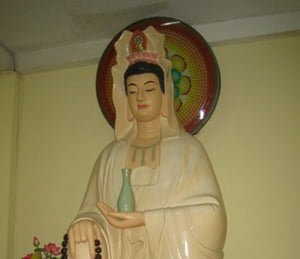"Different schools of Buddhism all have different devotional practices to the Buddha, although all Buddhists make symbolic offerings to the Three Jewels, that is, the Buddha (teacher), Dharma (teachings), and Sangha (community)."
Andi Young "The Sacred Art of Bowing"
Recently I was teaching a course on Vietnamese history, and naturally enough Buddhism was a part of the discussion. While discussing a ritual, one of the students asked me: "Why is everything always done in threes in Buddhism?"
I realised then that I had a lot to explain, and I thought I would do so on this blog.
When one bows at a Buddhist shrine, one always makes three prostrations. At the same time one offers three sticks of incense. When you make a ceremonial procession around a temple or tomb you do so three times.
 |
| 3 sticks of incense offered at a buddhist shrine in Binh Dinh, Vietnam |
This number is not arbitrary. Buddhists instantly understand that the number 3 represents the Three Jewels (the Triratna) that make up Buddhism. These are:
 |
| Sakyamuni Buddha |
1. The Buddha: The person of the historical Buddha Sakyamuni.
2. The Dharma: The body of teachings that describe Buddhist doctrine and belief.
3. The Sangha: The group of people who follow the Buddha and his teachings. This was traditionally interpreted as the ordained celibate clergy who serve the Buddha exclusively, but most modern Buddhists extend the meaning to incorporate the communities of lay-people who follow the Buddhist path.
And so each time we bow, and each time we place a a stick of incense in the burner, we are recalling one of these "Jewels," these essential elements of the Buddhism.







